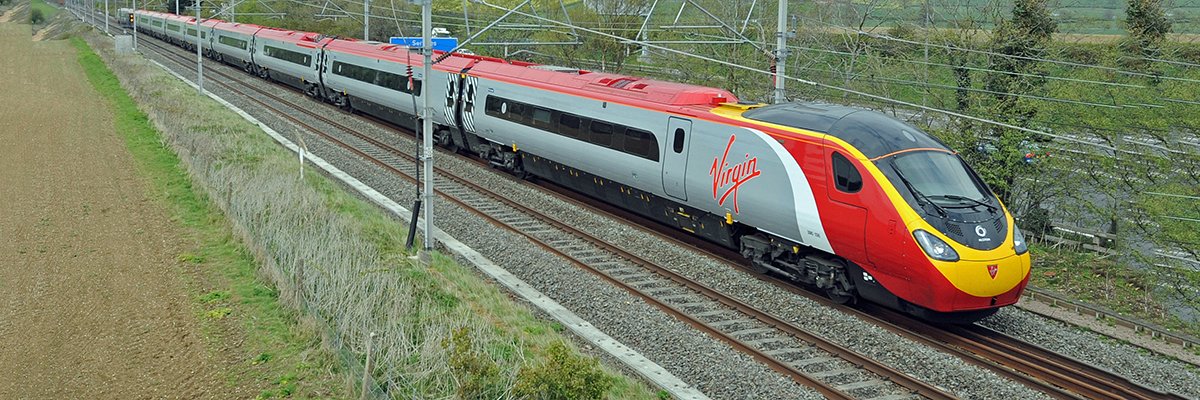13 May 2021 | OPINION
Over the last year, we have been reminded that there are things that the public and private sectors do better than each other. The creation and roll-out of vaccines in miraculously short order is a great example, particularly of the power of the two working in partnership.
The public sector – doctors, nurses and teachers – has been the spine of the nation’s response to the coronavirus pandemic, but the private sector has been instrumental in developing the vaccines. And once the virus abates, it will be the turn of the private sector to take the lead – the entrepreneurs, the creators, the risk-takers getting the economy firing again, to help towns and cities recover and, ultimately, to repair the public finances – but this won’t be truly successful without the right public policy interventions.
As we emerge from the current crisis, getting the balance between the two sectors right, across our economy, will be crucial.
Nowhere is this more evident than in the railways, where the Government is promising to publish its long-awaited white paper. Expectations are that it will recast the roles of the public and private sectors in delivering this vital public service. Talk is of the most far-reaching reforms since privatisation in the 1990s.
Coronavirus has decimated passenger numbers, putting unprecedented strain on public finances to keep services running. There are big question marks over the extent to which people will return to train travel. In 1994, privatisation ushered in a new era of growth on the railway and prosperity for the communities it serves. With the right system in place, the same can be true now.
The need for a new relationship between the public and private sectors to run the railways better is beyond doubt. Private companies were amongst the first to argue for major reform. The Government is right to want a more joined-up approach from the railways in certain areas – to make timetables more reliable and to reform outdated regulations so fares are simpler to choose and buy.
A new body operating at arm’s length from the Government is the right answer. But in reaching for the benefits of greater co-ordination, the Government must be careful not to knock from the shelf the gains of a competitive, commercial and customer-focused approach to operating trains.
As the Government prepares its white paper, Britain’s trains stand at a junction. Down one track lies a centralised structure, where train operators – instead of acting as businesses that must provide a quality service to paying customers – look inwards to Whitehall committees for permission to act. In the other direction is an agile, localised structure, where the attention of a responsive, customer-oriented private sector is focused outwards on passengers, ready to meet their needs. People are attracted back to trains in greater numbers by a better experience.
The pedigree of the private sector here is clear. Over two decades in private hands, rail passengers doubled. Finances transformed, reducing the burden on taxpayers. Money was generated to fund public investment in running more trains and revitalising both local and hub stations, catalysing further private investment and breathing life into surrounding areas. As the network reached capacity, however, and changing lifestyles saw people wanting new types of fares, fissures in the system were painfully exposed and the need for reform became all too apparent.
Decisions taken by this Government in the coming weeks and months about how to improve the railways will set the course for the next 25 years. Get it right and the prize, as the nation emerges from Covid, is a railway that is better for passengers – doing more to level up the economy, to help the public finances to recover and to enable local communities to breathe cleaner air by offering an attractive alternative to the car, all underpinned by a new system for fares that gives people the choice and simplicity they crave.
Get it wrong and there is a real risk of a return to the managed decline seen before privatisation, with falling passenger numbers, decaying stations and unreliable infrastructure.
As we’ve learned during the pandemic, the country is better when we work together. For rail, the answer is a new relationship between the public and private sectors that gets the best out of both, and unlocks all the benefits of this low-carbon method of travel and transport.
Consider this: rail accounts for just 1.4% of transport emissions and 0.5% of the UK total, despite accounting for 10% of all journeys made. So, restoring customer confidence in using public transport and increasing railway patronage to pre-pandemic levels will be essential if we are to meet the Government’s net zero target and its aim for at least a 68% reduction in greenhouse gas emissions by the end of the decade, compared to 1990 levels.
The public sector being clear what it wants the railways to do for the country, co-ordinating the network as a whole and setting the right targets for the people on the ground running the tracks and the trains. The private sector empowered to use its expertise in delivering a great service to paying customers, to invest and innovate and grow their market, with a reasonable sharing of the risks and rewards.
With the right balance between the public and private sectors, not only in rail but right across the economy, there lies ahead a generation of growth and prosperity for Britain.
Robert Nisbet is the Director of Nations and Regions at the Rail Delivery Group, which represents private train operators and Network Rail. Until 2018, he was a senior lobby correspondent in Westminster for Sky News, after a long career as a reporter and presenter for both Sky and the BBC. Robert also sits on the Advisory Board of the ‘Reform’ think tank.
















